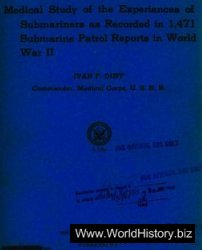The coastal duchies of Amalfi, Naples and Gaeta were very different from
the Lombard principalities. For one thing, the small size of their territories
meant that they did not face the problems of distance and control which
undermined effective government in the principalities. InNaples andGaeta
hereditary dynasties were already established by 900, and in Amalfi a ruling
family was in the process of consolidating itself by that date when the
city’s governor, Manso, associated his son with him in its rule. By 907
the Byzantine government had recognised his position by granting him
the rank of spatharokandidatos, although the comparatively lowly status
of the parvenu Amalfitan dynasty is suggested by the fact that at the time of
the Garigliano expedition the rulers of Naples and Gaeta were granted the
much higher rank of patrikios.37 Manso’s family was displaced by a coup in
958, but otherwise the ruling dynasties in the coastal duchies were stable
enough to persist unchallenged throughout this period, and indeed well
into the eleventh century. The new Amalfitan ruling family lasted until the
time of Robert Guiscard in the late eleventh century, and that of Naples
until the death of the last duke in 1139.
The economy of all three duchies was based on trade, but not to the
same extent. Amalfi, with the smallest and most mountainous territory,
was the most active in such trade; Naples, with the largest hinterland, the
least. According to IbnHawqal, an Arab traveller writing c. 975, Amalfi was
‘the richest city of southern Italy, the most noble and most illustrious by its
condition, the most affluent and the most opulent’.38 By the 940s Amalfitan
merchants were present in some numbers at Constantinople, and by the
end of the century in Egypt. But the primary trading destinations were
North Africa and Sicily, to which timber, grain, linen and other agricultural
products from southern Italy were transported. Naples was a centre for
linen production, which was praised for its quality by Ibn Hawqal. Such
trade required good relations with Islam, and this explains the reluctance of
Amalfi and Gaeta to participate in military operations against the Arabs in
the ninth and early tenth centuries; indeed, at times they provided actual
assistance to the invaders. That the duchy of Naples played a more active
role in combatting the Arabs of the Garigliano suggests that the city’s trade
was less significant to its well-being than to the other two duchies. But
the fact that grain was certainly imported from the interior of southern
Italy to Amalfi, and probably also to Gaeta, shows that the economy of the
Campanian ports required links with the Lombard principalities as well.
Furthermore, the role of Salerno in such trade cannot be entirely excluded.
It was Islamic gold that was used to mint imitation quarter-dinar coins
called tar`ı, the principal money of southern Italy outside the Byzantine
provinces, and from c. 1000 these were minted at Salerno as well as Amalfi.
Profits from such trade helped particular families to establish their rule at
Gaeta in the mid-ninth century and at Amalfi in the 890s, and to consolidate
their regimes thereafter. The surviving wills of two rulers ofGaeta,Docibilis
I in 906 andDocibilis II in 954, show the very considerable movable wealth
that these men had at their disposal, for which trading profits are the most
obvious source.39 The possession of mills was also an important facet of their
power. The duke of Gaeta had a monopoly over mills, which he granted
out to others only in exceptional circumstances. In Amalfi the number
of mills attested in surviving documents far exceeds what the relatively
small population of the duchy can have needed for its domestic supply,
and yet their value was high. While not possessing a monopoly like their
Gaetan counterparts, the Amalfitan rulers held quite a number of mills
and could thus benefit from the income that they generated. In these, as in
other ways, rule in the coastal duchies was very different from that in the
Lombard principalities.
Unlike the Lombard princes, the dukes of Amalfi, Naples and Gaeta
could not look to a tradition of rule hallowed by time, nor did they assert
the ultimately divinely sanctioned nature of their rule; the exception found
in Amalfi from the 950s, the dei gratia/providentia style, may well have
been an attempt to legitimise the new and usurping dynasty. Rather, their
position rested on their wealth, both from the remains of the public fisc and
from their private family property, on their role as lawgivers and military
leaders, and on their control of the local church, in which their relatives
were frequently given high office. In the early part of the century the rulers
of Amalfi were often content to refer to themselves as ‘judges’, while the
adoption in the early eleventh century of the title magister militum by the
rulers of Naples reflects their military role as defenders of their people.
Byzantine titles were an important element of legitimisation for the newer
dynasties of Gaeta and Amalfi, although their use of such titles might vary
depending on how far they felt in need of Byzantine support and alliance.
With the coming of theOttonians in the 960s and their support for Pandulf
Ironhead of Capua, the dukes of Naples and Amalfi gravitated once more
towards friendship with the eastern empire, and their documents once
again made reference to their Byzantine ranks. The duke of Naples actively
supported the Byzantine invasion of Campania in 969.
|
|
||||||||
|
Www.WorldHistory.Biz
Sundries
 Contact Contact
|
 
7-08-2015, 23:48
Amalfi, naples, gaeta: matters of trade
  |
|||||||
 |
 |
 |
 |
|||||
|
||||||||

 World History
World History





